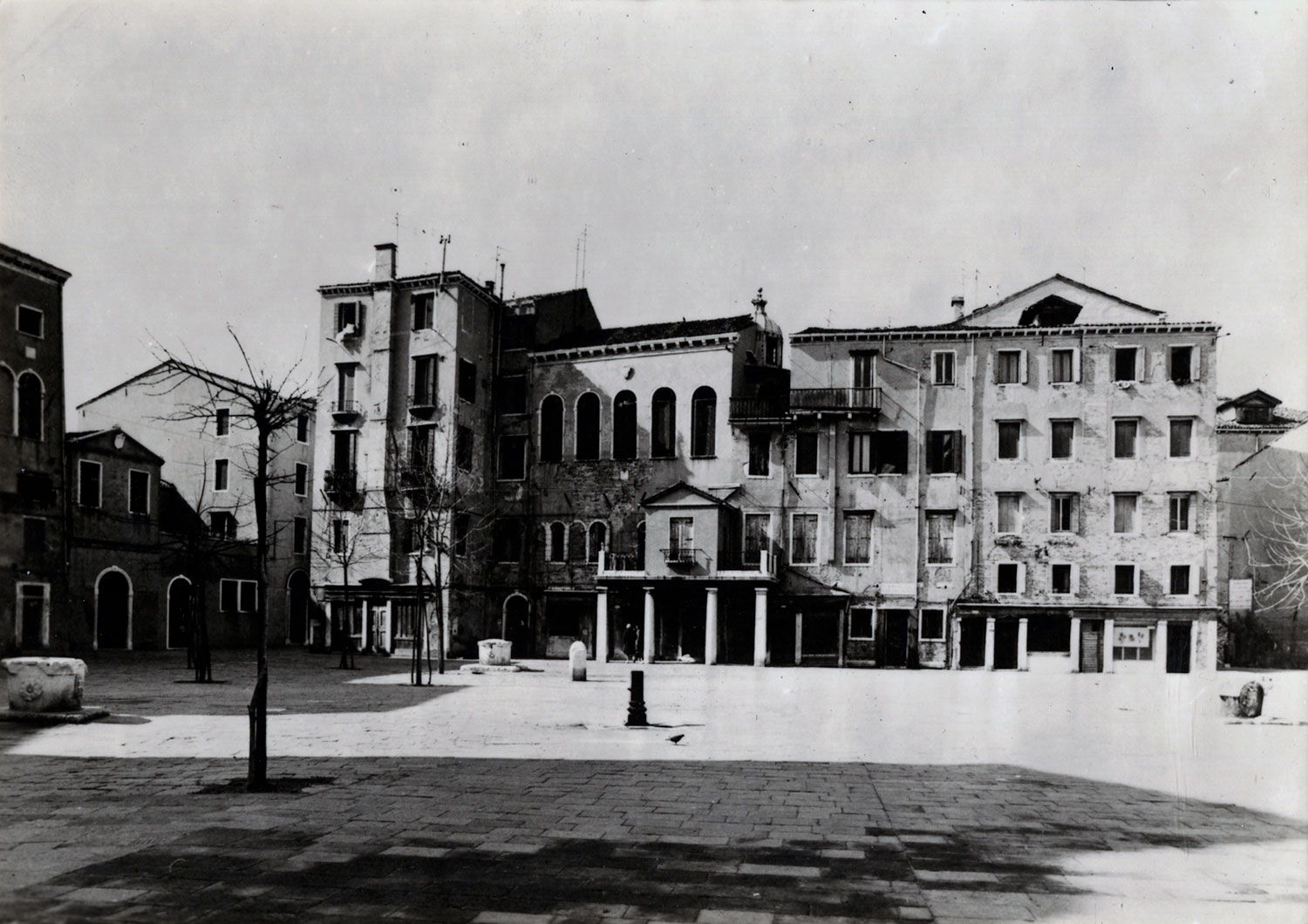The Ghetto Nuovo of Venice, a portion of which is shown in this photographic postcard (which incorrectly identifies the location as the Ghetto Vecchio), was established on March 29, 1516. Though the explicit purpose of this confinement was to limit the interaction of Jews and Christians, the ghetto’s establishment also represented progress for the city’s Jewish population. Before 1516, Jews had been officially allowed to reside in Venice only on a temporary basis, so the creation of the Ghetto signified, on at least one level, official acceptance of the presence of Jews in Venice. While the Republic of Venice imposed many restrictions, Christians and Jews still came into regular contact. The famed 17th-century rabbi Leon Modena (1571–1648) noted, for instance, that Christian clerics and nobles frequently came to the ghetto to hear his learned sermons.
This photograph shows the Scuola Italiana (Italian Synagogue), with its five round-arched windows, which look out on the Campo del Ghetto Nuovo. Campo, which literally means “field,” is the name for public spaces surrounded by buildings upon which the organization of the city of Venice was based. Besides housing the public cisterns, the open space of the campo served as a venue for a community’s market and outdoor events, including religious ceremonies. By the late 16th century, as the Ghetto’s population rose, several synagogues were installed in multi-story buildings ringing the Campo, including the Scuola Grande Tedesca (German Synagogue) and the Scuola Canton, which can just be seen in the building to the left.
Venice’s campi generally were named after the church whose presence dominated each campo. In contrast, here it is impossible to tell from the exteriors which buildings house the synagogues. In compliance with a 1426 law forbidding the construction of synagogues as separate buildings, the Scuola Italiana was located on the third floor of an existing structure when it was built in 1575. The hidden nature of the synagogue in this campo, in contrast to the prominent placement of churches in the majority of the city’s campi, mirrors the contrast between the status of the Jews and Christians in Venice at this time.
